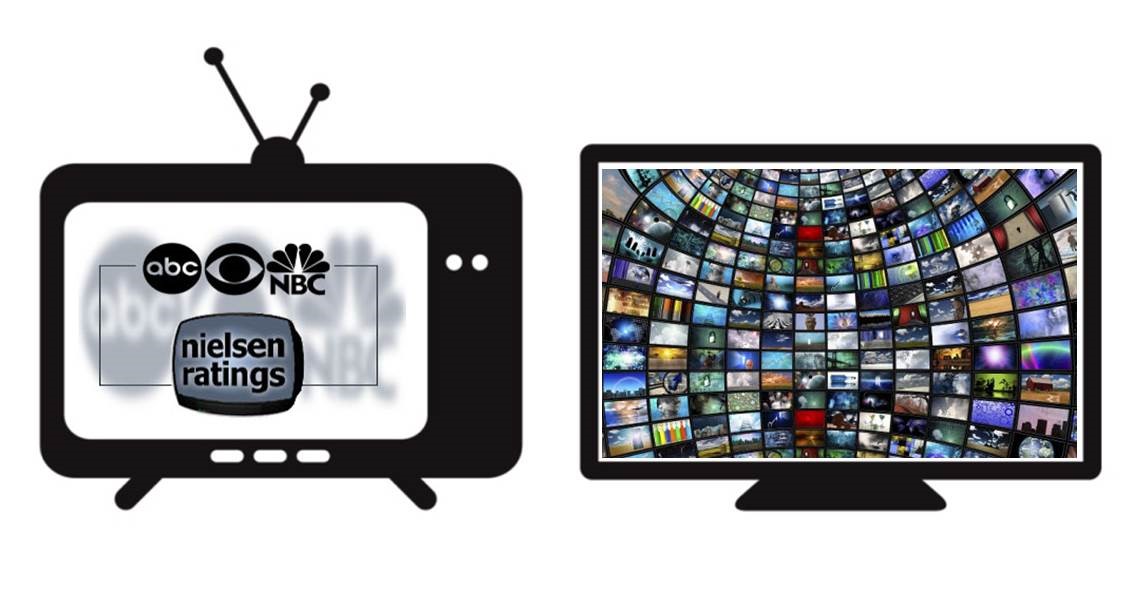The (Rating) Point of No Return – Part I
First of a Two-Part Look at Local Television’s Tantalizing Transition to Impression-Based Buying

Image Source 1, Image Source 2
PART I – GETTING TO THE POINT
In the early 2000s, Cox Media developed an animated superhero, of sorts, named “Rita the Rating Point.” Rita’s primary goal was to add a bit of flair to storytelling efforts focused on audience growth across an expanding lineup of Cable networks. Rita was a perfect “point” person back then, helping bring to life the reality that more and more Cable programs were delivering ratings that deserved notice and delivered results for advertisers.
Perhaps surprisingly given the dramatic changes in technology and media consumption over the past 15 years, Rita remains relevant still today. As it has been for 60 years, the ever-resilient rating point continues to be the currency of local television advertising. When 2016 draws to a close, U.S. marketers are expected to have invested approximately $70 billion in TV ads – with more than a third of those dollars devoted to spot, or local, TV. By and large, gross rating points (GRPs) and cost-per-point (CPP) continue to be the prevailing metrics driving the planning, execution and evaluation of local TV campaigns.1
For all of Rita’s longevity, though, questions have arisen more recently about her continued effectiveness, particularly in the local television marketplace. The rise of digital media, changes in how consumers interact with media, and the introduction of programmatic TV buying, among other things, have spawned a movement that seeks to shift the advertising community’s attention away from the venerable rating point, focusing instead on one of its core components – the impression.

Rita the Rating Point; circa 2002 (Image Source: Cox Media archives)
A solid first step in understanding the rationale behind this call for change is to revisit the difference between impressions and ratings, as well as the mathematical relationship between the two.
In advertising parlance, viewers are commonly referred to as impressions. By definition, an impression is a person (or household) exposed to a program, network or advertisement. Hence, impressions are nothing new to television advertising. They are, in fact, one of the two ingredients necessary to calculate ratings.
Nielsen, the incumbent authority on TV audience measurement, defines a rating as the “estimated percentage of the universe of TV households (or other specified group) tuned to a program at once.”2 In math terms, calculating a rating is a division problem. The estimated number of viewers – i.e., the number of impressions – sits atop the equation as the numerator, and the total population, or “universe,” resides below the line as the denominator. The resulting percentages are then multiplied by 100 and referred to as rating points.
A 1.0 TV rating, then, represents 1% of the population in the geography being measured. Consequently, the bigger the market, the more viewers being delivered by each rating point. Each rating point in the Phoenix TV market, for example, delivers more viewers than each rating point in the Topeka (KS) market.
If the math seems a bit daunting, you’ve already identified one of the most-touted potential benefits associated with the conversion to an impression-based standard for local TV advertising. Focusing on impressions instead of ratings eliminates the division problem and the potential confusion of mismatched universes, allowing for more direct comparisons of audience delivery across different geographies.
While supply-and-demand and a variety of other factors ultimately determine the value associated with any audience, no additional information is needed to determine that an audience of 1,000 viewers in the Phoenix Interconnect is equal in size to an audience of 1,000 viewers within a single Cable ad zone in Gainesville, FL. And therein lies the beauty.
“The best part about going to impression-based buying,” NCC Media’s Nick Garramone said during an industry webinar on the topic earlier this year, “is that you can start to concentrate on the geographies that make the most sense.” Janice Finkel-Greene, representing Magna Global’s research department, echoed that sentiment from the agency perspective. “If we shift from insisting on measuring by ratings, if we dump the division,” she said, “we can get more of the actual viewing and monetize more of the areas that are available.”3
More viewing means better campaign results for advertisers and agencies, which ultimately benefits media sellers, as well. That said, the theoretical win-win of transitioning the local television marketplace from rating points to impressions will not happen overnight. Part II of this series – coming October 3 – will examine key advantages and challenges associated with Rita the Rating Point’s potential retirement.
Click here to check out Part II.

References:
1 http://www.prnewswire.com/news-releases/pwcs-entertainment–media-outlook-forecasts-us-industry-spending-to-reach-720-billion-by-2020-300281287.html#continue-jump; http://www.medialifemagazine.com/the-outlook-for-spot-tv-slow-growth/
2 http://www.nielsenmedia.com/glossary/
3 https://www.youtube.com/watch?v=a3e_4Bk-JnY and https://www.youtube.com/watch?v=L20hBp6eGQg
Connect with a Marketing Expert
Share Post On Social
Related Insights
Connect With Your Local Marketing Expert
You know your business. We know advertising. Together, we can bring your business to more people. Contact a member of our team today. We’d love to help you grow.




